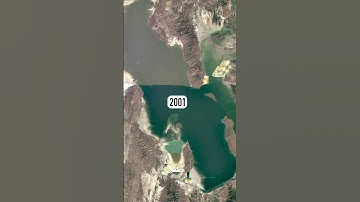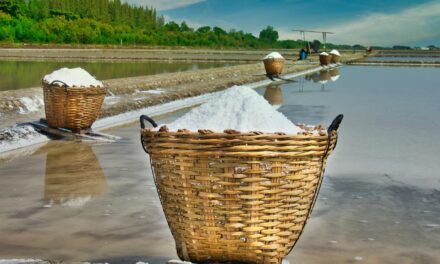Long-term water shortage management explained
Long-term water shortage management, and more
A Sea of Change: The Great Salt Lake’s Journey
A Vital Ecosystem
The Great Salt Lake is an immense, hypersaline lake located in Utah, USA. It boasts a salinity level of approximately 12%, making it the third saltiest body of water in the world, earning it the moniker “Dead Sea of America.” As a keystone element of the state’s landscape, it plays a crucial role in supporting a diverse ecosystem.
The Price of Thirst: The Impact of Water Shortages
The lake’s health is inextricably linked to water availability. In recent decades, Utah has experienced unprecedented drought conditions, leading to a significant reduction in snowmelt and the consequent decrease in inflows into the Great Salt Lake. This has resulted in a series of cascading effects:
- Shrinking Lake Levels: Reduced water levels have exposed vast stretches of the lakebed, transforming the once-vibrant shoreline into a barren expanse.
- Increased Salinity: As the water evaporates, the remaining water becomes more concentrated, further increasing salinity levels, which can be detrimental to aquatic life.
- Habitat Loss: The shrinking lake size and increased salinity have devastated critical habitats for millions of migratory birds and other wildlife, threatening their populations.
A Fight for Survival: Finding Solutions
Despite these challenges, there is hope for the Great Salt Lake. Several initiatives are underway to address these alarming trends:
Water Conservation:
- Implementing water-saving measures in homes and businesses, such as low-flow appliances and xeriscaping.
- Promoting efficient irrigation practices in agriculture, the largest water user in the state.
Drought Mitigation:
- Investing in drought-tolerant crops and other agricultural practices that require less water.
- Exploring alternative water sources, such as desalinated water from coastal areas.
A Shared Responsibility: Keeping the Great Salt Lake Alive
Protecting the Great Salt Lake requires collective effort. Governments, businesses, and individuals can all play a role:
- Government Commitment: Enacting policies that promote water conservation, protect critical habitats, and support innovative solutions.
- Business Initiatives: Adopting sustainable practices that reduce water consumption and implement drought-resilient strategies.
- Individual Actions: Conserving water in daily life, supporting water-saving programs, and advocating for the preservation of the Great Salt Lake.
The Great Salt Lake faces an immense challenge, but with awareness, collaborative effort, and innovative solutions, we can give this iconic landmark a fighting chance to recover and continue to thrive as an integral part of Utah’s environmental heritage.
The Great Salt Lake: A Thirsty Story
TL;DR – Too Long; Didn’t Read: The Great Salt Lake is shrinking due to water shortages caused by drought and overuse. This hurts wildlife, our air quality, and even the economy. We can help by conserving water, using smart irrigation, and supporting efforts like the Active Climate Rescue Initiative to bring the lake back to life.
A Sea of Change: The Great Salt Lake’s Journey
Imagine a vast, shimmering body of water, so salty it’s nicknamed the “Dead Sea of America.” This is the Great Salt Lake, a vital part of Utah’s landscape and ecosystem. But like a thirsty traveler in the desert, the Great Salt Lake is facing a serious water shortage.
The Great Salt Lake gets its water mainly from rivers and streams flowing into it. Think of it like a bathtub: water flows in from the faucet, and it flows out through the drain. But in recent years, the bathtub has been getting less water from the faucet and more water is going out the drain. This is because of a combination of factors, including:
- Drought: Utah has been experiencing some of its driest years on record, leading to less snowmelt in the mountains, which feeds the rivers that flow into the lake.
- Growing Population: More people mean more demand for water for drinking, farming, and industry.
- Climate Change: Rising temperatures and shifting weather patterns have caused more evaporation from the lake and less water in the rivers.
The Price of Thirst: The Impact of Water Shortages
When the Great Salt Lake shrinks, it’s like a domino effect, affecting many things:
- Wildlife Disappears: The lake is home to millions of migrating birds and other animals. As the water recedes, their habitats shrink, and many animals struggle to survive.
- Dust Storms Rise: As the lakebed dries up, salt and dust are blown into the air, creating harmful dust storms. This affects air quality and public health, especially for those with respiratory issues.
- The Economy Suffers: The lake is a key part of Utah’s tourism industry, drawing visitors from around the world. A shrinking lake means fewer visitors, hurting local businesses and the economy.
A Fight for Survival: Finding Solutions
The good news is, there are things we can do to help the Great Salt Lake:
- Water Conservation: Saving water at home, in businesses, and in agriculture is crucial. We can all do our part by taking shorter showers, fixing leaky faucets, and choosing water-wise plants for our gardens.
- Smart Irrigation: Farmers can adopt new irrigation technologies that use less water while growing crops.
- Policy Changes: Governments can implement policies to encourage water conservation, protect water resources, and restore the health of the Great Salt Lake.
The Active Climate Rescue Initiative: A Beacon of Hope
One organization working to restore the Great Salt Lake is the Active Climate Rescue Initiative (climate-rescue.org). They are actively researching and implementing solutions to help the Great Basin, including the Great Salt Lake, overcome water shortages. They believe that through innovation and collaboration, we can find ways to revitalize our water resources and protect our planet for future generations.
A Shared Responsibility: Keeping the Great Salt Lake Alive
The Great Salt Lake is facing a major challenge, but with awareness, action, and innovative solutions, we can help it recover. By conserving water, supporting smart irrigation practices, and backing initiatives like the Active Climate Rescue Initiative, we can all play a role in ensuring the future of this vital natural resource. The Great Salt Lake’s journey is not just about water, it’s about our shared responsibility to protect our environment for the sake of wildlife, our health, and our economy.
More on Long-term water shortage management…
- Long-term water shortage management
- Great Salt Lake
- Water conservation
- Drought management
- Water reuse
- Desalination
- Aquifer recharge
- Watershed management
- Climate change adaptation
- Sustainable water use
- Water efficiency
- Water policy
- Water governance
- Water scarcity
- Water security
- Water stress
- Water sustainability
- Water planning
- Water resources management
- Great Salt Lake restoration
- Great Salt Lake ecosystem
- Great Salt Lake brine shrimp
- Great Salt Lake wetlands
- Great Salt Lake migratory birds
- Great Salt Lake air quality
- Great Salt Lake economy
- Great Salt Lake tourism











